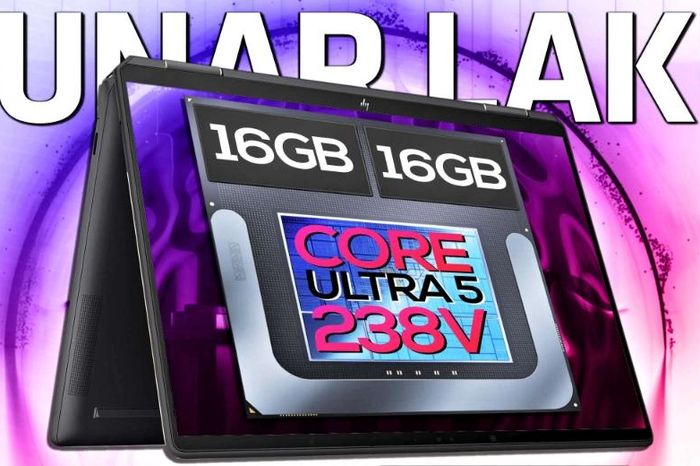Intel Lunar Lake processors will be available in the third quarter of 2024
New AI chips are ready to power upcoming Microsoft Copilot Plus PCs.
The announcement says the upcoming x86 processors will begin rolling out in the third quarter of 2024, just in time for the holidays. The launch of Lunar Lake is a competition with the Snapdragon X Elite chipset and is Intel's way of asserting its position.

Intel promises that the Lunar Lake chip will be a breakthrough change in AI processors. Therefore, the upcoming product line will have 3 times the AI performance of Intel Meteor Lake.
This will of course be supported by Intel NPUs boosted with speeds of 40 NPU tera operations per second (TOPS). The AI chip will help power Copilot Plus experiences. Besides the upgraded NPU, these chips will also come with over 60 TOPS GPU, providing over 100 platform TOPS.
Intel will offer its Lunar Lake product line in more than 80 new designs through 20 laptop manufacturers. Part of the company's goal is to ship more than 40 million AI processors this year.
You should read it
- Top 5 best Intel CPUs 2022
- What's the difference between Intel Core and Intel Core X CPUs?
- Intel ARC Xe-HPG 'Alchemist' GPU Leak: High Performance, Launching in 2022
- Unfair competition, Intel was fined EUR 1.06 billion in Europe
- Intel will unveil the 'new computing era' at IFA 2014
- Intel launched a super-saving computer model priced from 3 million
- Intel's 9th generation microprocessor can be released on October 1
- What is the Intel NUC?
- What is Intel's new Core i9 CPU line?
- Researchers found a way to disable Intel ME
- Intel Arc 'Alchemist' GPU Will Come With DisplayPort 2.0, Support Up To 16K Display Resolution
- Intel is back with foldable laptops
May be interested

Which soundbar or AV receiver is better for your home?

These are the reasons why you should use a touchpad on your desktop instead of a mouse

TCL launches 4K screen with 1000Hz refresh rate

How to find hidden tracking devices using Apple and Google detection tools

Apple reveals 'Vehicle Motion Cues' feature to help prevent motion sickness

Lenovo ThinkPad Z13 Gen 2 review: Incredible power in a compact design





 5 reasons to skip Surface Laptop and wait for Intel Lunar Lake
5 reasons to skip Surface Laptop and wait for Intel Lunar Lake Intel makes the ability to upgrade RAM on laptops a thing of the past
Intel makes the ability to upgrade RAM on laptops a thing of the past Compare Kaby Lake and Sky Lake
Compare Kaby Lake and Sky Lake Intel launched the 8th generation processor Whiskey Lake and Amber Lake
Intel launched the 8th generation processor Whiskey Lake and Amber Lake The 11th generation Intel Core H-series (Tiger Lake-H) mobile processors have just arrived
The 11th generation Intel Core H-series (Tiger Lake-H) mobile processors have just arrived Intel postponed the release of Cannon Lake 10nm chip
Intel postponed the release of Cannon Lake 10nm chip